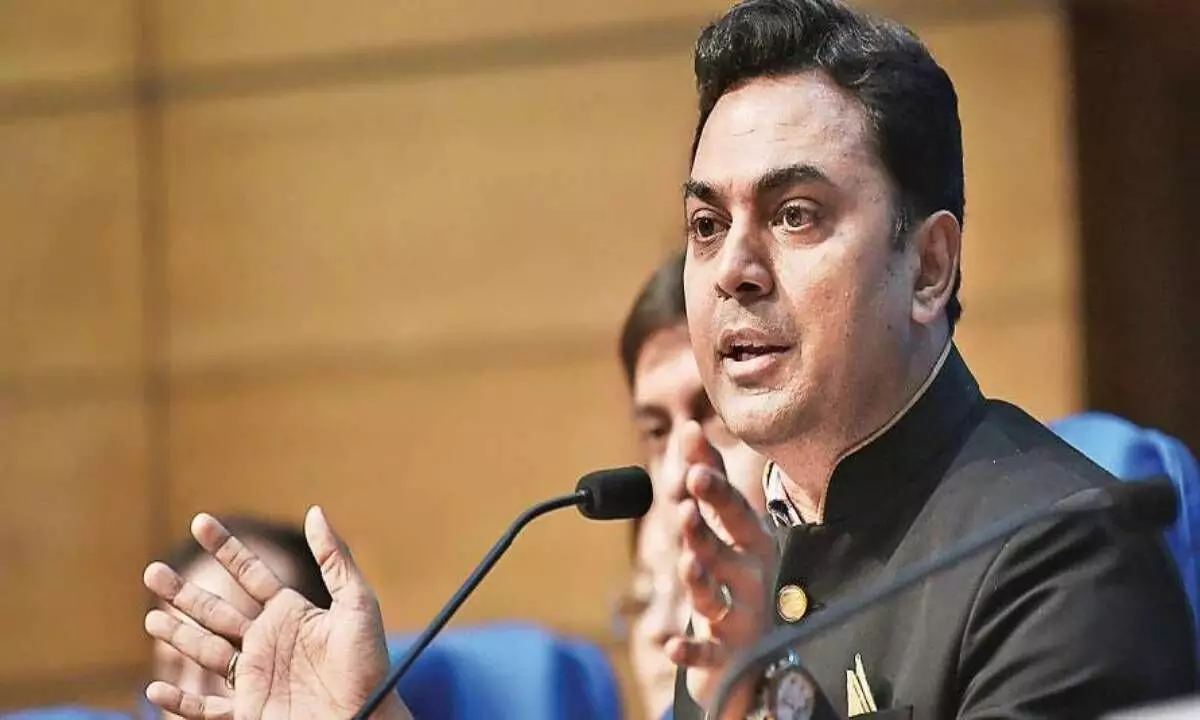Covid stimulus delivered maximum bang for taxpayer funds: KV Subramanian
In a series of social media posts, Subramanian explained how India’s policy response to the impact of covid pandemic on jobs, livelihoods and economy was different from that of other economies, both advanced and emerging.
image for illustrative purpose

In a series of social media posts, Subramanian explained how India's policy response to the impact of covid pandemic on jobs, livelihoods and economy was different from that of other economies, both advanced and emerging.
The remarks from the former chief economic advisor come amid fears of a recession in the US with the US Fed tightening its monetary policy to control inflation after the covid stimulus that included cash transfers. It is also significant given that India's covid response had earlier faced criticism from the Opposition about its size and that it was focused more on the supply side and liquidity boosting measures.
"While all other economies – both advanced and emerging – focused their policy primarily on stimulating demand, India's policy focused on enhancing demand and supply. Crucially, India identified early that the Covid pandemic would negatively impact aggregate supply," Subramanian said in a tweet.
He said by maximizing the bang for the taxpayer's buck on the demand side and recognizing early the need for supply-side measures ensured that India is in a better macro situation compared to the rest of the world.
Reorientation of fiscal policy to infrastructure spending by the sovereign, structural reforms to alleviate supply-side frictions, and incentives for firms to ramp up production in particular sectors formed the bulwark of India's policy focus on limiting damage to aggregate supply, he said.
India pursued a three-pronged demand-side policy to maximize the bang for every taxpayer buck spent during Covid, he said. India undertook in-kind transfers of cereals and pulses to 800 million citizens through its public distribution system. These did not impose additional fiscal costs as they tapped into existing reserves created from its food procurement policy, said Subramanian.
The government undertook direct benefit transfers to the vulnerable by leveraging the digital identity of Aadhaar and over 400 million Jan Dhan Yojana bank accounts created for the poor post-2014.
"India recognized that financial sector not only possesses granular information on borrowers, which the sovereign can never rival, but also employs financial leverage. So, India provided sovereign loan guarantees for lending to small and medium enterprises by banks and the urban poor by microfinance institutions," said Subramanian.
Because financial sector tracks borrower credit scores, only a borrower who continues to be genuinely distressed would default. For genuinely distressed borrowers, sovereign guarantee ensured that the loan becomes a "quasi cash-transfer". All other borrowers have incentives to repay for fear of permanently damaging their credit history – an inducement absent when the sovereign doles out free money, he said.
The government understood that the sovereign guarantees itself would have to be paid not during the covid year but later when the economy would have recovered (unlike direct transfers that would get paid then). So, the sovereign makes payments when its fiscal situation is much better, Subramanian said.
Loans with guarantees from sovereign thus ensured that demand-side policy was targeted to the genuinely distressed for whom it became a quasi-cash transfer. Instead of a direct transfer of ₹100 in Covid year that could not have been targeted sharply, loans with guarantees ensured that sovereign only spends ₹5 when the economy has picked up and that too in a well-targeted way (assuming a default rate of 5% on the loans), he said.

